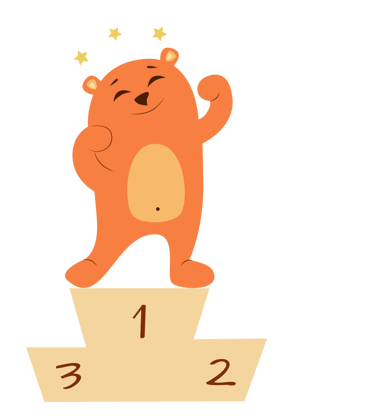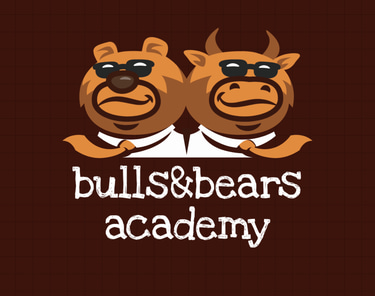The Inverted Head and Shoulders Pattern: Your Signal for Bullish Reversals

What is an Inverted Head and Shoulders Pattern?
Think of the inverted head and shoulders pattern as the market's way of saying, "I've had enough of falling, it's time to rise!" It's a reversal pattern that typically forms after a downtrend, signaling that the downward movement may be coming to an end. The pattern consists of three troughs: the left shoulder, the head, and the right shoulder, with a neckline serving as the resistance level formed by connecting the tops of the left and right shoulders.
The Left Shoulder and Its Volume
The left shoulder kicks things off with a strong decline in price, accompanied by high volume—classic downtrend behavior. Traders are pessimistic, pushing prices lower. However, as the price bottoms out, it starts to rise with lower volume. This increase in price with declining volume indicates that some traders are beginning to lose their bearish outlook, but it's still a normal part of the downtrend process.
The Head and Volume Changes
Next, we have the head, the lowest point in the pattern. The price falls again, surpassing the left shoulder's trough and reaching a new low. This movement is usually accompanied by high volume, as the market is still showing weakness. However, at the bottom, buying pressure increases, leading the price to correct upward with lower volume. This buying pressure is a sign that the downtrend might be losing steam. The price breaks the previous trough's resistance level, which now acts as a support level, and moves up to a level near the previous top.
The Right Shoulder and Its Volume
The right shoulder completes the pattern. The price falls again but only reaches the depth of the left shoulder before rising once more. During this stage, the volume is typically lower, reflecting reduced bearish sentiment and participation from traders. It's like the market is saying, "We've fallen enough, it's time to get back up."
The Neckline: The Resistance Line
The neckline is a key element in the inverted head and shoulders pattern. It's the resistance level drawn by connecting the highs of the left and right shoulders. This line acts as a barrier that the price must break to confirm the pattern. The neckline can be horizontal, upward-sloping, or downward-sloping, each giving slightly different signals.
Filtration of the Inverted Head and Shoulders Pattern
The pattern is considered complete when the price breaks above the neckline after forming the right shoulder. But, to avoid false breakouts, many traders use a filtration rule of a 3% violation of the neckline to confirm the breakout. This ensures the pattern is legitimate and not just a blip on the radar.
Target of the Inverted Head and Shoulders
To calculate the target price after the pattern is complete, measure the distance from the head (the lowest trough) to the neckline. Then, add this distance to the point where the neckline is broken. This target gives traders an idea of how far the price might rise following the reversal.
Types of Necklines
Normal Neckline: Horizontal, providing a straightforward signal.
Upward Sloping Neckline: Suggests a weaker reversal since prices have already traveled a significant distance before hitting the neckline.
Downward Sloping Neckline: Indicates a more aggressive reversal as the downtrend was strong before breaking up.
Weaknesses of the inverted Head and Shoulders Pattern: How to spot an inverted Head and Shoulders Pattern
While forming the inverted head and shoulder pattern, these weaknesses act as early warning signals :
1. Breaking support or low of the Left Shoulder: while forming the head , the first weakness that you can see right away is the breaking of the left shoulder's low (creating the 1st warning signal)
2. Not Making a Lower Low After the Head: If the price doesn't reach a Lower Low after forming the head, thus creating a right shoulder which is approx. the same Low as the left shoulder (creating the 2nd warning signal breaking the trendline of the downtrend)
3. Volume decreases along the formation of the Head and Shoulder pattern: After the formation of the left shoulder keep a close eye at the changes of volume
you would find out that during going downwards to make the head Low the volume becomes lighter compared to previous downwards movement and during the formation of right shoulder the volume in the downward movement becomes even lighter than previous head and left shoulders Lows. (this acts as a 3rd warning signal that the trend is coming to an end and a reversal might be undergoing)
4. Breaking the Resistance level (neckline): the price then breaks the Resistance level which confirms the completion of the Head & Shoulders Pattern.(creating the 4th warning signal)
Failure of the Inverted Head and Shoulders Formation
Not all inverted head and shoulders patterns result in a reversal. Sometimes, market conditions or unexpected news can cause the pattern to fail. When this happens, prices may break the neckline but then quickly recover and move lower, invalidating the pattern. It's important to use additional indicators and risk management strategies to protect your trades.
Do Prices Have to Retest the Neckline?
No, prices do not always retest the neckline after breaking it. Sometimes, the price can continue to move upward without looking back. However, a retest can provide an additional confirmation of the reversal, giving traders more confidence in their positions.
Final Thoughts
The inverted head and shoulders pattern is a powerful tool in technical analysis, providing clear signals for potential trend reversals from downtrend to uptrend. By understanding its components—the left shoulder, head, right shoulder, and neckline—you can better anticipate market movements and make more informed trading decisions. Remember, it's all about the volume and the price action confirming the pattern. So next time you spot an inverted head and shoulders, you'll know exactly what the market is trying to tell you.
Happy trading, and may your inverted head and shoulders patterns be clear and profitable! 📈🗣️


Chart Monsters: The Mystery of Complex Head and Shoulders

In the world of trading, there’s a spooky pattern called
the Complex Head and Shoulders and its upside-down twin, the Complex Inverted Head and Shoulders. These patterns aren’t your ordinary creatures; oh no, they’re the Frankenstein’s monsters of technical analysis, stitched together with extra heads and shoulders on either side.—they can have more than one head or extra shoulders on both sides.
They show up on major charts, and work just like the normal versions. The volume moves the same way too. But these patterns look messier and can be trickier to spot, making them feel like unpredictable creatures lurking in your charts.
beware: these complex beasts can sprawl across the screen sending chills down your spine as they signal potential trend reversals, ready to signal a big trend change.


